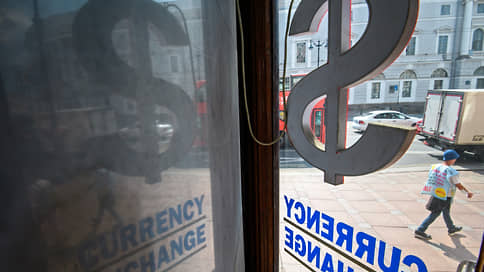State support measures slightly strengthened the exchange rate of the Russian currency
[ad_1]

Measures to support the ruble, taken by the government, began to bear fruit: despite the attempt of the dollar to gain a foothold above the level of 96 rubles/$, according to the results of trading on August 29, it stopped at 95.46 rubles/$. Market participants note a decrease in speculative activity due to the possibility of expanding support measures and the continued supply of foreign currency from exporters even after the end of the tax period.
The dollar exchange rate on the Moscow Exchange on August 29, after a two-week break, rose above the level of 96 rubles/$. During the auction, it reached 96.28 rubles / $, which is 97 kopecks. higher than the previous day’s close. But following the results of the trading session, the rate stopped at 95.46 rubles/$. The euro exchange rate in the course of trading reached 104.08 rubles/€, the maximum since August 16, but closed at 103.63 rubles/€, adding 44 kopecks per day. The yuan rose by only 4 kopecks during the day, to 13.094 rubles/CNY.
Market participants are talking about “a failed attempt by speculators to speed up the rate after the end of the tax period.”
On Monday, August 28, companies completed the transfer of taxes to the budget, which, according to Rosbank analysts, led to a structural liquidity shortage of 0.7 trillion rubles. Mikhail Vasiliev, chief analyst at Sovcombank, notes that in previous months, after the end of the tax period on the 28th, the supply of foreign currency on the market was declining, which contributed to the weakening of the ruble.
This time, speculative investors could also make an attempt to accelerate the rate, but as it approaches the dollar value of 100 rubles. such strategies are now being phased out.
Vladimir Putin, President of the Russian Federation, December 4, 2014, two weeks before the increase in the key rate of the Central Bank to 17%:
“I ask … to take tough, coordinated actions to discourage the so-called speculators from playing on fluctuations in the Russian currency.”
As the head of the analytical department of Zenit Bank Vladimir Evstifeev notes, as the ruble approaches the lows of the current year, “there are risks of supporting the ruble”. It was after overcoming this threshold, for example, that the Bank of Russia held an unscheduled meeting and raised the key rate from 8.5% to 12%.
The weakening of the ruble at the end of the tax period is also hampered by additional sales of foreign currency carried out by exporters as part of recent agreements with the authorities, Dmitry Babin, an expert on the stock market at BCS Mir Investments, believes.
Two weeks ago Interfax citing several sources, he said that from August 21, exporters will have to report weekly to the relevant departments on the volume of repatriated foreign exchange earnings and its sales.
“We assume that exporters will adhere to these agreements. Otherwise, the repatriation and sale of a significant part of foreign exchange earnings may become mandatory, and restrictions on capital outflows may also be introduced,” notes Mr. Vasiliev.
Indirectly, the high activity of exporters in the market can be indicated by high trading volumes and the size of an average transaction. On August 29, the volume of trading with the dollar for tomorrow delivery amounted to 98 billion rubles, which is only 7% lower than the previous day. The volume of trading with the yuan reached 142.5 billion rubles, with the euro – 48.8 billion rubles. The size of the average transaction in dollar increased and amounted to 5.3 million rubles.
Since autumn, the ruble may also receive support from oil prices. In August, the average price of Russian Urals oil, according to Kommersant’s estimates based on data from Profinance and Investing.com, was $71.5 per barrel, up $9 from July. “The estimated lag between high oil prices and the supply of foreign currency from export earnings to the Russian foreign exchange market, according to the Bank of Russia, is two to three months. Therefore, a positive impact on the ruble is likely in September-October,” explains Mikhail Vasiliev.
In the baseline scenario, Mr. Vasilyev assumes that only the activity of exporters will be enough to keep the currency in the corridor of 94-99 rubles. per dollar, 101–107 rubles. for the euro and 12.9–13.5 rubles. for the yuan: “The understanding that the authorities can more confidently support the ruble will restrain the fervor of speculators. Growth to 100 rubles. per dollar and above is possible primarily in the case of maintaining a stable real demand for foreign currency from the business side.
[ad_2]
Source link





